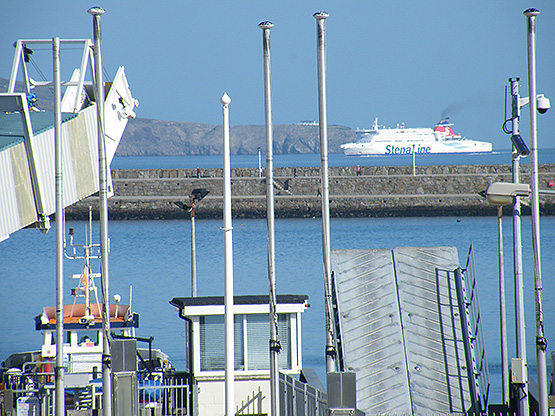#FerryService2016? – A new ferry operator sought for the Dun Laoghaire-Holyhead route this year remains to be seen following Stena Line's closure of the service in 2014 and with only months away before the summer season begins, writes Jehan Ashmore.
Stena finally confirmed in early 2015 to permanently close the historic route dating to 1835, by consolidating existing operations in neighbouring Dublin Port where since 1995 the company have also run a service to Holyhead.
Responding to Afloat.ie, a spokesperson for Dun Laoghaire Harbour Company said at this moment they could not make any further comment on a ferry service in 2016, but they added they hoped to be in a position to make a comment sometime early this year.
It is almost a year ago when DLHC received seven expressions of interest from operators to provide a seasonal-only ferry service to Holyhead following an e-Tender advert.
Commenting then on the expressions of interest recieved, DLHC and said they 'will now consider these' and added 'final configurations would be a matter for discussion and agreement with a new provider, and would be in keeping and take account of the Harbour Company's Masterplan'.
According to a document from the advert, a berth is available which is 140 metres long and with a maximum depth of 5.8 metres. In addition the berthing facility is described as having a shore to ship ramp, which can easily be modified to facilitate the configuration of a new vessel.
Afloat.ie adds that St. Michaels Pier has two berths, one is custom-built to only accommodate the specialist requirements of the HSS Stena Explorer when the highspeed fast-craft was withdrawn from service in September 2014. There are plans to remove this berth which requires planning permission for its dismantling.
The second conventional berth on St. Michaels Pier was also used by Stena Line when a smaller 'Lynx' fast-ferry craft, Stena Lynx III had also operated the Ireland-Wales route in recent years.
The Stena Lynx III had served shoulder seasons when HSS Stena Explorer reduced operating its full year-round service until 2011. It was in that same year the ‘Lynx’ was sold to overseas owners in Asia.
































































